
10:26 AM (CDT)
1713626801 epoch

|
Saturday April 20, 2024 10:26 AM (CDT) 1713626801 epoch |
|
October 18th, part II - The Nazi concentration camp at Dachau, Germany. |
|
|
|
|

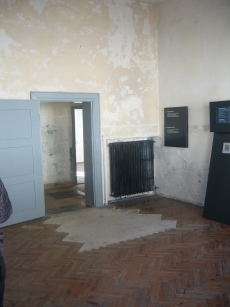
|
The SS had a room right off the entrance that they used for special prisoner registration. All incoming prisoners were processed through this room. There was a large display that had telephone handsets here, where one could stand and listen to information about this room and the bunker in about a bajillion languages, but I just couldn't stay still and listen. |
|
|
|
|
To the east of the registration room were another stretch of cells, and then the Gestapo wing, where Nazi prisoners were held. |
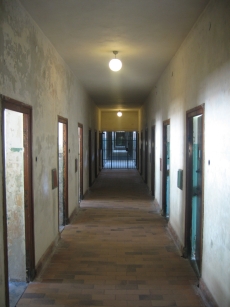
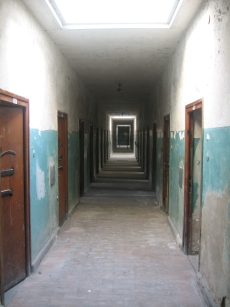
|
|
|
|



|
Moving back to the west, there were several typical cells that were open. They were tiny, miserable rooms. The last picture shows a diagram of the "standing cells," where prisoners would be made to stand up in a tiny box for as many as three days at a stretch. Interesting: This method of inducing discomfort (some consider it torture) is still in use today, by many governments and militaries worldwide. |
|
|
|
|
One cell was completely blacked out, with the story of a prisoner disappearing projected onto the far wall. The ghostly passage reads: "Around two o'clock in the morning the key rattles in the lock of the first cell door at the other end of the corridor. We're all awake at once. The unlocked foot-shackle makes a metallic clink on the floor. The prisoner from cell number 1 takes the first few steps out into the Bunker courtyard. A shot rings out. A life is extinguished." |

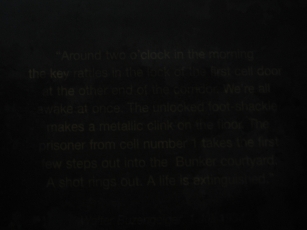
|
|
|
|
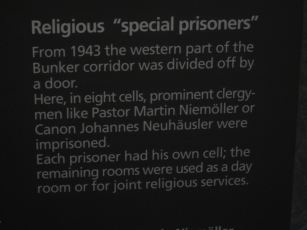
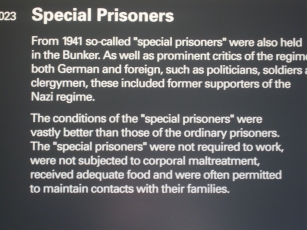
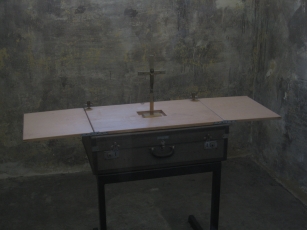
|
At the western end of the bunker, a cluster of cells housed a number of priests. They were allowed to hold church services, although it was not obvious who was allowed to attend them. The last photograph shows the makeshift altar they used for their ceremonies. |
|
|
|
|
After touring the bunker, we moved back outside to the eastern end of the bunker courtyard. At the end of the courtyard was the execution wall, where countless prisoners were lined up and murdered, shot to death. |
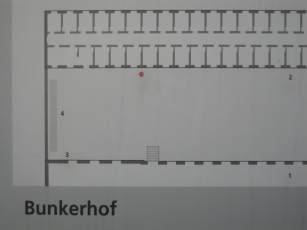
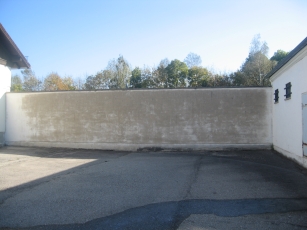
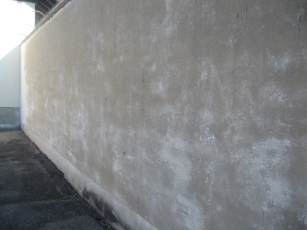
|
|
|
|
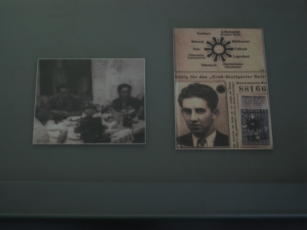
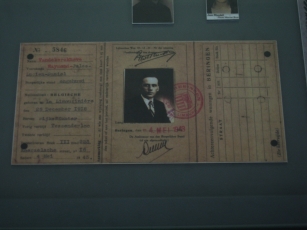
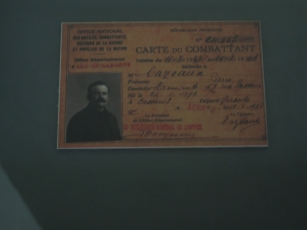
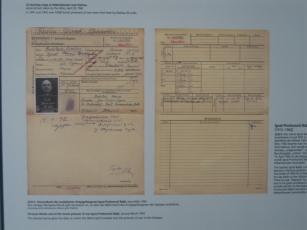
|
When we finished in the bunker courtyard, we moved on to the museum. I started taking pictures of every display, but there were just too many of them. One thing I truly appreciate about the Germans is that they acknowledge what happened, and they don't try to change history in their favor (unlike Japan). They know what they did. No punches pulled. One of the first displays was of identification papers from some of the prisoners that were murdered at Dachau. Warning: I left the large images quite large, around a half megabyte each, so you could see the victims. |
|
|
|
|
The goals of Nazism stated that they desired a racially and nationally pure society. Their hatred and intolerance of "imperfection" allowed the concentration camp idea to thrive. It started with just one. And look at the last picture, to see how it ended. |
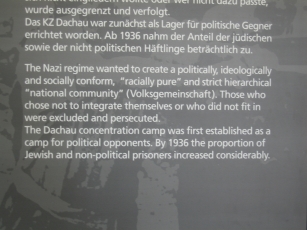
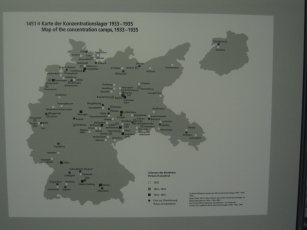


|
|
|
|
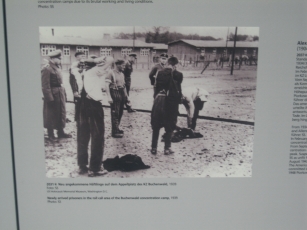

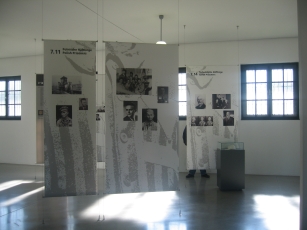
|
The first picture shows some new arrivals on the rollcall grounds. The next photograph lists recorded victims, by country. It wasn't clear how these numbers were determined. The last shows some photographs of Polish victims. |
| <-- Oct 18th, part I Oct 18th, part III --> | |